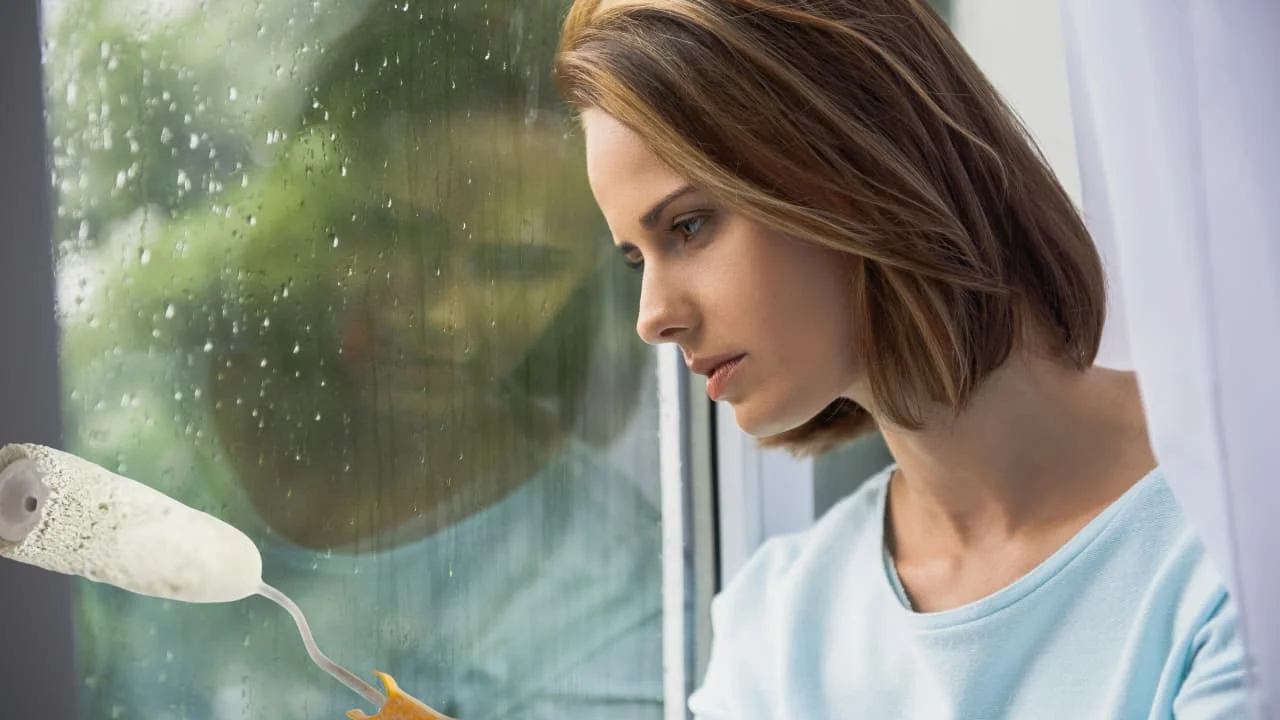Rainy days can put a damper on outdoor activities, but what about indoor projects like painting? Can you paint inside when it rains or should you postpone the task for sunnier skies?
In this blog post, we will explore the ins and outs of tackling interior and exterior painting projects during rainy weather.
From understanding how humidity and air conditioning affect drying times applying paint to offering tips on protecting your floors, we’ve got you covered.
Key Takeaways💭
- It is possible to paint indoors during rainy weather as long as the water doesn’t find its way into the space where you’re working.
- When painting indoors during rainy weather, it’s important to protect your floors and note that the drying time for paint will be longer than usual due to increased moisture in the air.
- To ensure a successful indoor paint job during rainy weather, make sure surfaces are completely dry before painting, use a dehumidifier, and choose water-resistant or waterproof paint with a low VOC rating.

Table of Contents
Can you paint inside when it rains?
Yes, you can paint inside when it rains. Unlike exterior paint with outdoor painting projects, interior painting projects are not affected by weather conditions. However, if you plan to open windows for ventilation while painting, you’ll want to take rain into account.
Painting Inside During Rainy Weather
It is possible to have acrylic paint inside during rainy weather as long as the rain does not reach indoors; during warm temperatures, however, longer drying times and floor protection are needed.
Possible, As Long As Rain Does Not Reach Indoors
Believe it or not, you can actually paint indoors while being indoors when it’s raining outside, as long as the water doesn’t find its way through open windows and into the space where you’re working.
For instance, I remember helping my sister repaint her living room on an unexpectedly rainy day. We had to make sure all windows were tightly closed to prevent any rain droplets from the exterior wall from sneaking in and ruining our hard work.
Additionally, we strategically placed some towels near the entrance door for people coming in and out of the house to avoid tracking in moisture that could affect the exterior and interior surfaces during our painting project.
Longer Drying Times And Floor Protection Needed
When painting indoors during rainy weather, it’s essential to note that the drying time for paint will be longer than usual. This is because of the increased moisture in the air, which slows down the painting process through evaporation and makes it difficult for the paint to dry out entirely.
Additionally, floor protection is a must when painting indoors with rain outside as you don’t want any wetness seeping through your floors and causing damage or stains. If you’re painting in the rain and using drop cloths, ensure that they cover enough area around the painted surface where you’re working to avoid any spills or drips onto unprotected floors.
You can also use painter’s tape to secure plastic sheeting over the surface of larger areas like carpets or rugs.
Tips For Painting Inside When It Rains
To ensure a successful indoor paint job during rainy weather, it’s important to make sure surfaces are completely dry and use a dehumidifier while choosing the paint application and the right type of paint.
Ensure Surfaces Are Completely Dry
Before you start painting indoors during rainy weather, it’s crucial to ensure that all surfaces are completely dry. Moisture on the painted walls and ceilings can cause paint to peel or bubble later on.
If there is still any moisture present on interior surfaces, wait until the area has dried completely before proceeding with painting. This may require running a dehumidifier to reduce excess humidity levels or allowing extra time for drying if it’s particularly cold outside.
Use A Dehumidifier And Choose The Right Paint Type
It’s important to take steps to control the humidity level when painting inside during rainy or wet weather. One way to do this is by using a dehumidifier, which helps remove excess moisture from the air and speeds up the drying process of the paint.
Additionally, choosing the right type of paint can make a big difference in how well it holds up in damp or humid conditions too. Opt for water-resistant or waterproof paint that’s specifically designed for indoor use and has a low VOC (volatile organic compound) rating.
Conclusion
In conclusion, painting inside when it rains is possible as long as you take the necessary precautions. Protect your floors and ensure that surfaces are completely dry before beginning the second coat of your painting project.
Consider using a dehumidifier to control humidity levels and choose water-resistant latex paint for added protection. By following these tips, you can successfully tackle an indoor painting project during rainy weather conditions.

